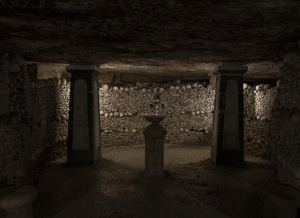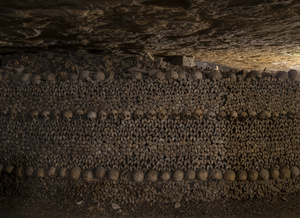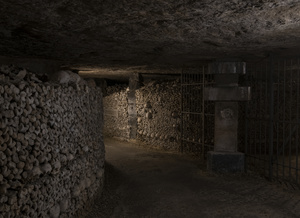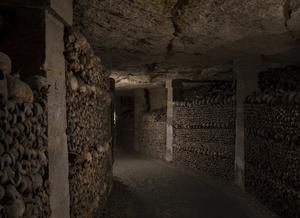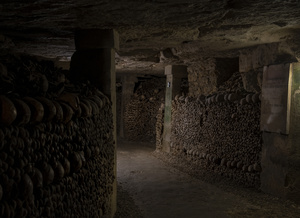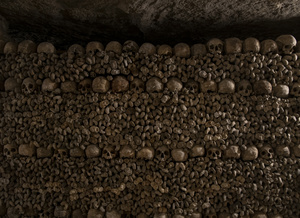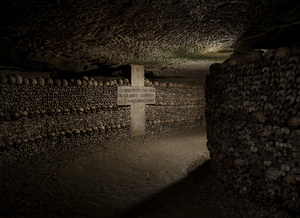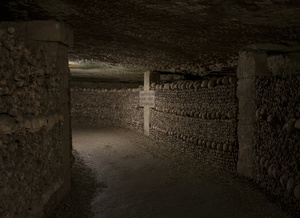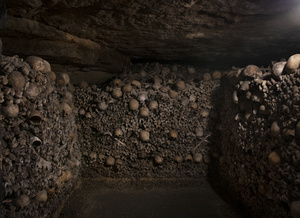
Catacombes
Commission for The New York Times Magazine (USA)
Story by Monika Woods
In 18th-century Paris, there were a lot of dead bodies and a limited amount of space to bury them, and eventually the city ran out of ground. The graves held so many dead that bodies burst through people’s basements. I once heard on a walking tour that Parisians who lived near these pre-catacomb graveyards couldn’t keep milk — it would spoil within hours. The bacteria in the air, from proximity to so much rotting flesh, would also turn wine. Catholicism forbade cremation, and crypts were already a public-health nightmare, so the only place to go was down. Burials within city limits were finally banned in 1780, after two decades of attempts. In 1785, the effort to remove human remains from graveyards and transfer them to underground tunnels was made law. That year, an old limestone mine was turned into an ossuary, and the city began moving all the bones there.
Today, the Paris Catacombs are thought to be home to six million skeletons.
